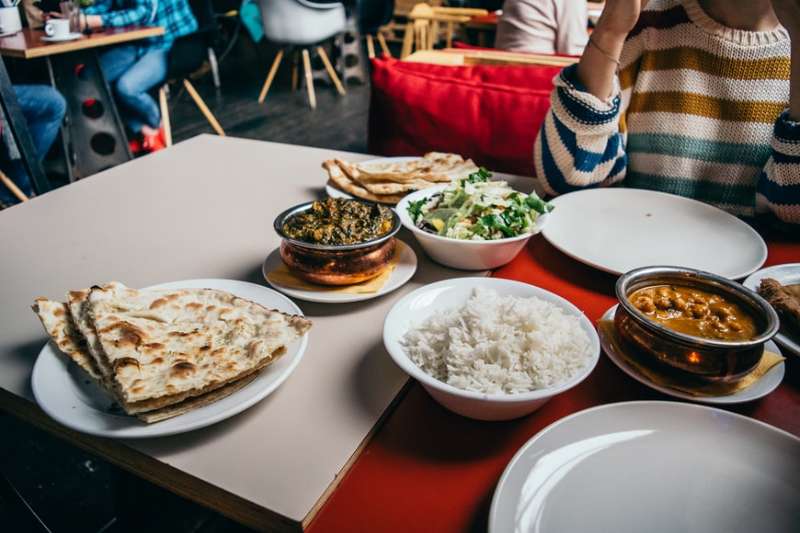It's important to observe dining etiquette in any country as it shows good manners and bringing. In India, eating is traditionally considered an elaborate ritual that should be acknowledged and respected. Food plays a part in every country’s culture and identity. Just as some cultures eat with chopsticks or sit on the floor to eat, India also has its own traditional dining customs. Here are some of the most basic and common dining etiquette you can find in India or Indian restaurants or even an Indian household.
Arrive late (no, seriously)
If you’re invited to dinner, arriving at your host’s place 15-20 minutes late is actually quite okay. It is customarily considered as rude by arriving early or exactly on time as your host will be still in mid-preparation. And after you arrive, you’ll also notice that you won’t be served your meal immediately. This is because there’s a prior snack session, where you’ll be offered a few drinks and some snacks accompanied by light chit-chat.When the meal is announced
With the global pandemic, it’s safe to say that everyone is washing their hands all the time, especially before meals. But as far as Indian dining etiquette is concerned, you must wash and dry your hands after the meal is announced. In fact, it is the first step of dining as per Indian etiquette.In restaurants, hotels and urban homes, tables and chairs are arranged for dining. However, in rural areas, some families sit together in comfortable clothes on floor mats made for eating meals. In most Indian homes, generally, the homemaker arranges food for the family on the table and keeps an eye on who needs what, offering and bringing more food.
Food is served in one go
There are no ‘courses’ when it comes to serving food in India, unlike the Western culture. All of the food is served in one go. Depending on India’s regional culture and the different cuisines served, you might get to see varying serving styles. Also, you won’t see the food served in individual portions. The homemaker instead will either serve the food on your plate or you may help yourself.Expect lack of cutlery
Indians prefer eating with their fingers, so expect the lack of (if any) cutlery. However, in urban areas and restaurants, spoons are used for eating liquid dishes like curries and daals. Indians do not encourage the use of a knife as cutlery because the food prepared here is generally bite-sized. For example, flatbreads are torn into small pieces using fingers and a boat-like shape is made; curry is then scooped and inserted in the mouth.There’s even an inside joke that when eaten with fingers, food tastes much better. Indians eat with fingers very neatly and only the tips of the fingers are used.
Use your right hand
When dining in India or an Indian household, always use your right hand. Even if you’re a lefty, you must use your right hand for eating.Indians consider the use of the left hand to be unclean and offensive. So the left hand remains dry and is only used for drinking water or passing dishes.
Sharing food
Lucky for you, Indian culture highly encourages sharing food with others. If you’re dining at an Indian restaurant with a friend and both of you order different dishes, then it is customary to share your dish with the other.What you need to keep in mind is to share only from the serving dish or bowl and not from your plate. Similarly, taking food from someone else’s plate is also considered bad manners. Also, do not dip your used spoon and fork into other people's food or the main serving dish as it is considered highly unhygienic.
No leftovers
Don’t ever leave anything on your plate as leftovers. Leaving food on your plate is not appreciated in Indian culture. The rule of thumb is “take what you want, eat what you take”. It isn’t necessary to taste each and every dish that is served, but whatever you place on your plate must be finished.Also, do not play with food or distort it in any way. You must keep in mind to eat your food at a medium pace. It might seem rude if you eat your food too quickly. Similarly, if you eat it too slow, it may imply that you don’t like the food.
After the meals
After you’ve finished your meal, you must compliment your host for the food. Since food is prepared with great effort and care, expressing your admiration will make the host happy.If you’ve finished your food early, then you must remain seated until the host or the eldest person at the table finishes their food. Getting up from the table when everybody else is still eating is considered ill-mannered.
Another thing to keep in mind is that don’t hesitate to ask your host for anything. Also, if your host offers more food, do not refuse unless you’re really full. If your host says ‘take some more food’ to you, it’s their way of showing love and respect. The amount you eat tells your host how much you enjoyed the food.
Enjoy an authentic Indian dining experience by heading toward The Yarra Indian Restaurant
Source: TheCultureTrip



































